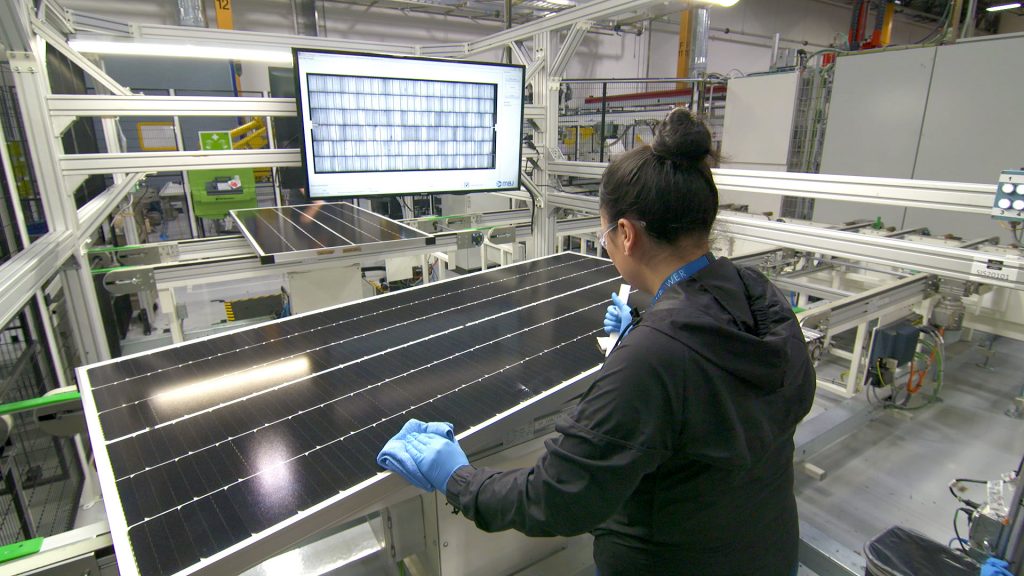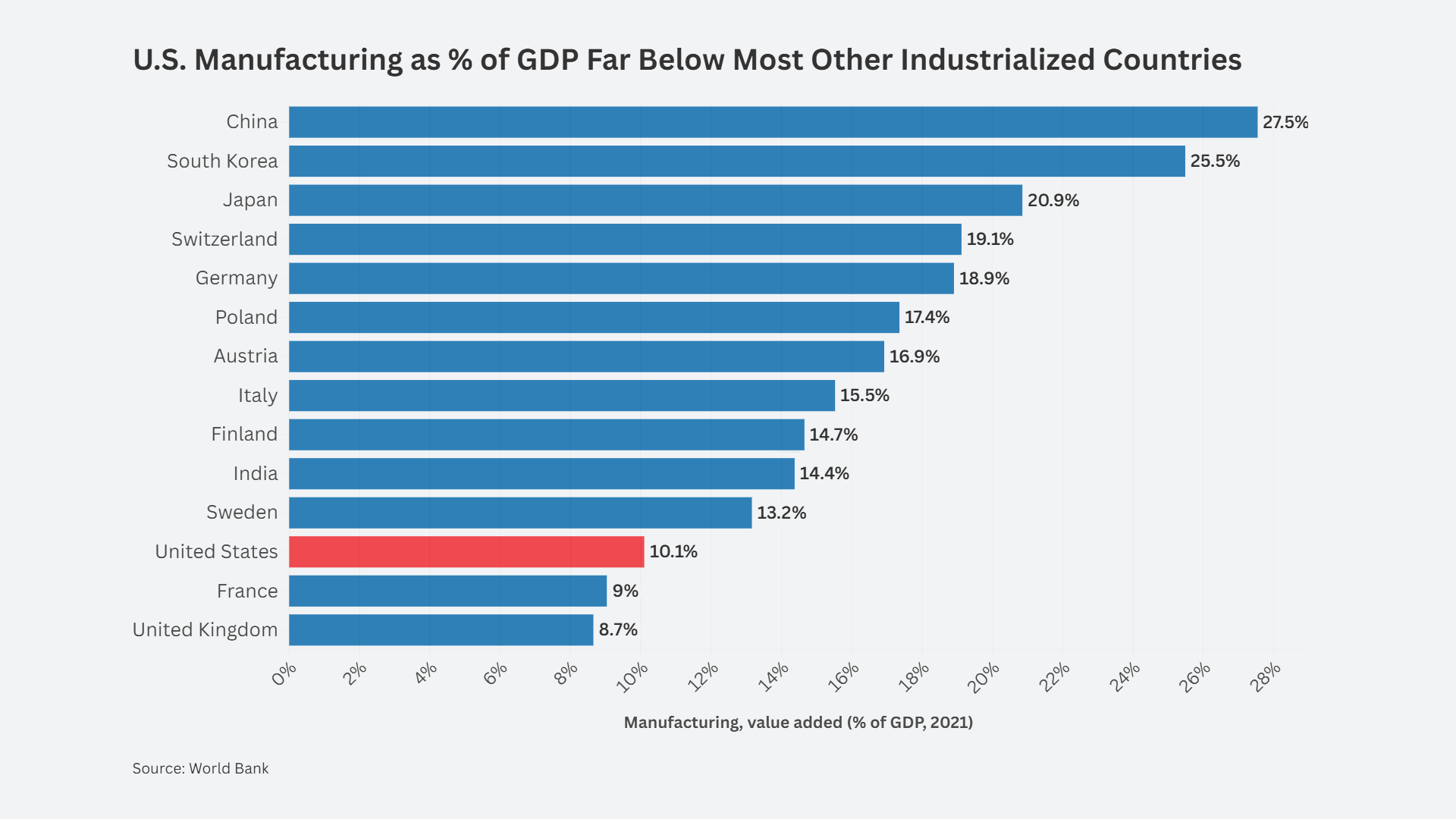By Jeff Ferry, CPA Chief Economist
The solar power industry enjoyed a healthy 2018, with solar deployments rising 4.5 percent to 11.6 Gigawatts installed last year.
That’s according to a new study, Sustainable Energy in America, published this week by Bloomberg New Energy Finance. The growth in solar deployments demonstrates that the Section 201 tariffs levied on solar cells and panels a year ago by the Trump administration have not slowed down the growing popularity of solar energy.
Meanwhile, new manufacturing operations for solar panels continue to spring up across the nation, as the tariffs make it more profitable to produce at home instead of import from Asia.
Renewable energy sources now account for 17.7 percent of total US electricity production, according to Bloomberg. When you take out hydro power (which goes back to the ancient Romans), the two new sources of renewable energy, solar and wind, account for 10.7% of US electricity production. Natural gas, at 35 percent, is the leading source of electricity. Coal provided 27 percent, down 6.3 percent, and Bloomberg says it will continue to decline as natural gas is more cost-effective.
The problem with both of the up-and-coming sectors, solar and wind, is that the US plays a small role in manufacturing the billions of dollars of hardware required for each. Wind equipment is manufactured in China and Europe. The US did once have a leader in wind turbine control software in American Superconductor (AMSC) of Massachusetts. However AMSC exited the business after its entire software platform was stolen by a Chinese partner. AMSC won verdicts on that IP theft case in courts in both the US and Austria but has not re-entered the business, preferring instead to focus its technology expertise on other markets.
On the solar side, the tariffs were enacted a year ago for four years to stimulate new investment in solar manufacturing. It looks like they are working. Solar Power World Online counted no less than 13 new solar panel manufacturing facilities coast to coast aiming to launch production this year. Some are relaunches of formerly dormant facilities, like SunPower’s plant in Hillsboro, Oregon, which employs about 200. Others are greenfield sites, like GreenBrilliance’s new plant scheduled to open this summer in Baltimore, Maryland. Still others are conversions of existing factories into solar module producers, like the LG Solar plant now hiring 160 workers for its facility in Huntsville, Alabama.
The Solar Foundation, a lobbying group for solar power, recently published a so-called “National Solar Jobs Census” which claimed that solar employment fell by 3.2 percent in 2018 to 242,000 employees. Efforts by their spokespeople to blame the alleged jobs decline on tariffs are misleading. First, the total price of a solar system actually fell in 2018, because solar panel prices actually fell by more than the tariff. Secondly, total deployments rose in the year, so the fall in employment, if it occurred, was due to factors other than a decline in demand for installation services.
A better analysis comes from the Bloomberg report, which points out that in 2018, utilities became the growth powerhouse, while residential and commercial deployments were slightly down. We are coming to the end of a tumultuous change in the industry’s business model. The solar installation industry has evolved from a hard-sell, cold-calling, commission-based sales strategy to a more mature approach to its customers. In the words of Bloomberg, the change is due to an “overdue transition away from marketing-fueled growth to a more sustainable industry model. Tesla and Vivint Solar are growing again, having restructured over the past two years. The firms are recapturing ground lost to the new market leader, Sunrun, which continues to grow.” That transition led to thousands of people, most of them in marketing, losing their jobs. Job losses at SolarCity alone (acquired by Tesla) were in the thousands.
Solar is a very political industry by its nature. The federal 30 percent tax credit is scheduled to end in 2020 unless it is renewed, and 12 states offer their own tax credits. There are also net metering programs which incentivize homeowners to install solar and sell the surplus back to the utilities. The various government programs, and expectations of their renewal or termination, play a large role in stimulating or depressing sales of solar systems at any moment and in each state.
It would be a shame if the tariffs become a political football in this volatile industry. All sources of energy play a role in furthering US energy independence, economic growth, and climate policy. While some would like to see renewable deployment sped up (the Green New Deal is the maximalist approach), others would like to see a slower pace. But there’s no question that the US needs to be able to provide for its own needs in energy, and that energy technology plays an important role in our economy, not just for jobs but for the development of new capabilities in other industries, defense and non-defense.
The first practical solar cell was invented at Bell Labs in 1954, and solar cells were used to generate power on space capsules in the 1960s. But beginning around 2005, the US lost leadership in solar cell manufacture as China targeted the sector as a growth industry. Like any technology industry, declining costs over time (today’s solar cells still only turn about 20 percent of the light that hits them into electricity) will make the industry more competitive and more strategic. Solar cells have other uses besides electricity and those uses will doubtless grow as the technology becomes more efficient and cost-effective.
This is an industry in which the US needs to be a major player.













